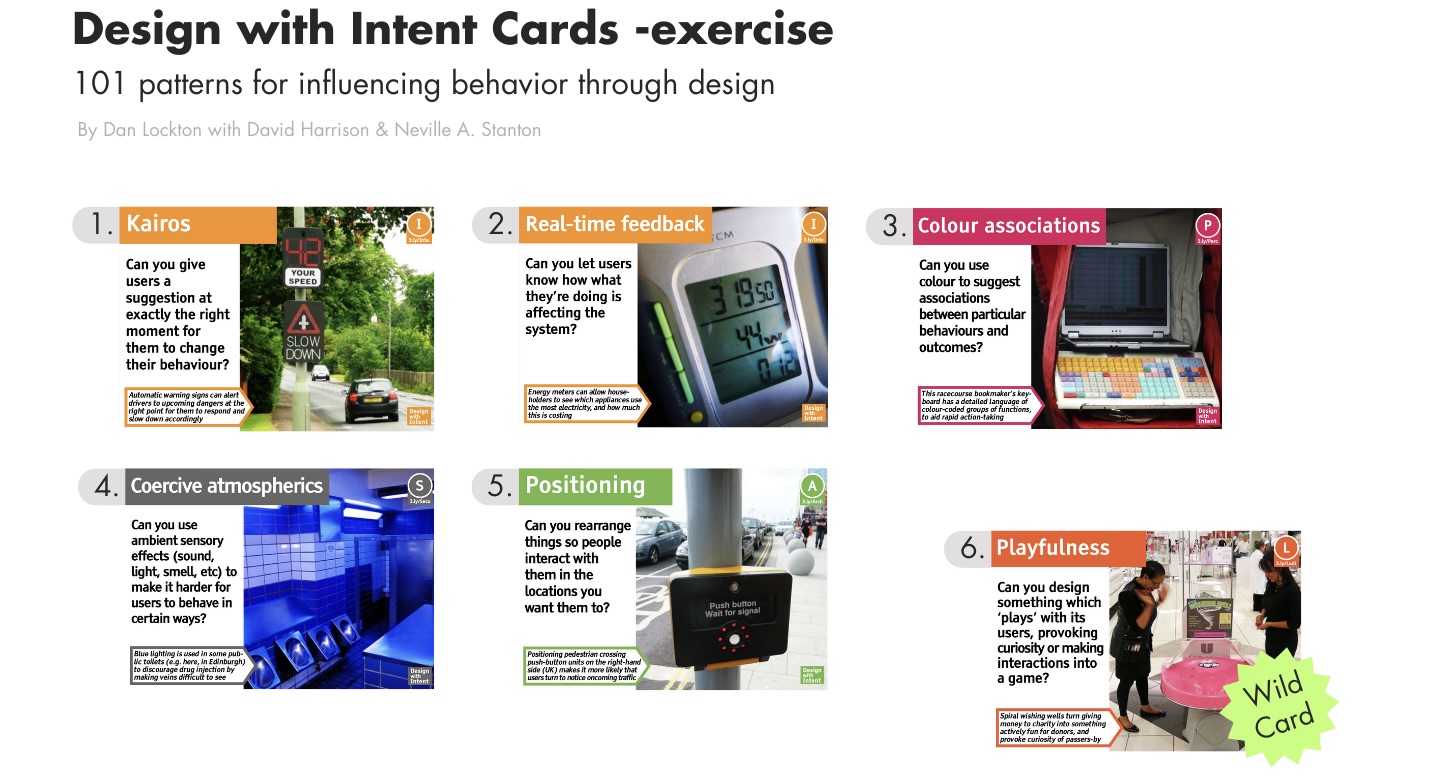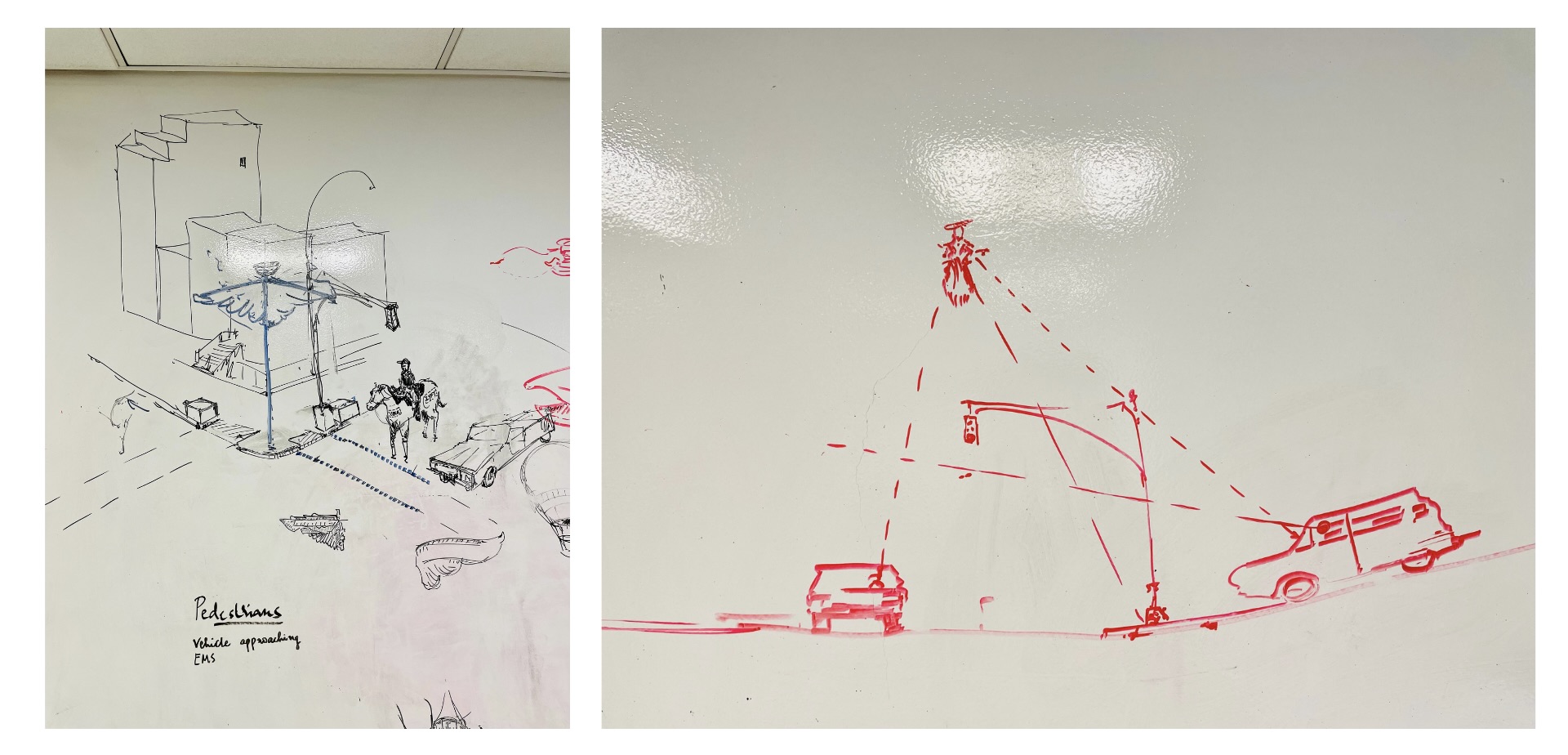Quote of the Week:
“What else could we possibly ask?”
After presenting our achievements in phase 1 of the project, we now had a clear direction to work on and dig deeper through research. We had an understanding of the problem space, covering the causes of accidents (such as speeding, distractions, and traffic volumes) and the primary locations of these accidents (often near intersections). At this phase of the process, it was time to learn more about the existing solutions and to further develop our own design concept through ideation.
Exploration of Technologies
In this phase, we started collecting content on our “information board” using Miro, a creative whiteboard online tool. The goal was to gain an understanding of the current state of intersections and the general use of infrastructure-related technologies on city streets. Throughout the week, our team enthusiastically collected a vast amount of data, and in our weekly meetings at the Seidenberg Manhattan campus, we analytically discussed the findings. The Miro board became an archive containing information about deep technologies from CERN and ATTRACT, different detection technologies such as GPS, camera and imaging tech, RARAD and LiDAR systems, sensor technology, LEDs, holographic projections, and the list goes on. We started to feel confident that LiDAR and sensory-based technologies that can detect movement and produce data by measuring multitudinous factors and units, were going to be part of our tech-based solution for enhancing traffic safety in busy New York streets with high pedestrian and traffic volumes.
Since Traffdar would be a system that delivers real-time information to its users, we began the ideation process to implement possible communication methods. What kind of data would it need to collect to produce information about what’s happening on the roads? What kind of technology would provide us with this information? In what form should information be presented to the people? Should it communicate visually through data visualizations over text-based information? And then came the main question… How can people recognize and understand the information Traffdar provides them? While there were times when the complexity of the process created uncertainty, our dedication to the problem never lowered our passion to solve the challenge. There had to be some kind of solution to keep New Yorkers more safe, we just had to dig deeper and discover it!
Upon thoroughly exploring various possibilities to answer the questions that arose, our next task included a comprehensive study of the physical properties of intersections and the elements they consisted of. The majority of intersections are designed to indicate pedestrian paths through crossing marks of continuous white stripes, also known as zebra crossings. There might be traffic lights for both pedestrians and drivers to illustrate when they have the right of way. Some intersections may even be elevated creating a physical obstacle to prevent drivers from speeding through them. Why did researchers, designers, and engineers (just to name a few) end up with such solutions and what are they intended to achieve, were some of the questions we sought to better understand in our analysis.
Behavior Change Exercise
Throughout each phase of the project, we participated in a continuous learning process, delving into the worlds of design and innovation with the help of our instructors. During this stage, we sought to explore the ways in which designers possess the ability to impact people’s behavior by addressing relevant social and environmental concerns, and in certain instances, even manipulate behavior under specific circumstances. We conducted a Design for Behavior Change exercise [1] to explore the potential influence of design on human behavior. The exercise involved a review of 101 behavior cards representing diverse pattern groups related to architecture, error-proofing, interaction, perception, cognition, and other design-relevant domains. Our goal was to choose the most relevant and promising cards that aligned with our solution space, through which we could discover new perspectives for product ideation. Additionally, we picked an “extra wild card” related to playfulness that allowed us to bring in characteristics from gamification into our brainstorming sessions.

The five picked Design with Intent -cards and an “extra wild card” to guide and inspire us through the ideation process.
The introduction of behavior cards made us think about additional questions about the most suitable location for Traffdar at an intersection. Where should Traffdar be placed? Is it in the center of the intersection, attached to a traffic light, or even inserted on the ground? How could we engage people through playful elements? Will people be curious about Traffdar if the interaction turns into a gaming element, or will it annoy them instead? Will it be safe? So many questions and not nearly enough answers (as of yet).
Ideating Product Features
Driven by extensive research and numerous open questions, we began listing the features that our product should have. Despite the challenges caused by undecided details, addressing and solving each problem at a time moved us forward in the project. As our project progressed, the idea of a guardian angel acting as a personal crossing assistant to help people move safely on the roads emerged as a promising idea to replace what we had so far imagined as Traffdar, a traffic detector. Upon reaching this stage, the milestone marked a moment of excitement and confidence in the direction we could be heading with our newest idea.

Whiteboard sketches from our team meetings.
Moving forward with fresh enthusiasm and new solution space, our following task was to ideate a suitable name for the product, as “Traffdar” no longer conveyed the concept of a guardian angel. At this point, a new member joined our team, an AI-mind known as Chat GPT, which helped us ideate a proper name for the urban guardian angel, now named Auriel. With the new product identity, our focus shifted towards developing a vision for the future that would enable Auriel to meet the challenges ahead as our society moves towards a greener and more sustainable planet.
References:
- Dan Lockton with David Harrison & Neville A. Stanton: http://imaginari.es/wp-content/uploads/2023/04/designwithintent_cards_1.0_draft_rev_sm.pdf

Recent Comments